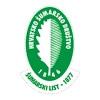
DIGITALNA ARHIVA ŠUMARSKOG LISTA
prilagoðeno pretraživanje po punom tekstu
| ŠUMARSKI LIST 1-2/1966 str. 28 <-- 28 --> PDF |
By check trees are meant the four largest dominant trees of the same species and age as that of the plus trees, which have grown under apparently similar ecological conditions in the neighbourhood of the plus tree, (usually up to a distance of 25—50 m or more from the plus tree). In stands of uneven age, these differences in age between the plus trees and the check trees exceeded 10 years only in exceptional cases. Only healthy trees and those free from stem defects have been approved as plus trees. In accordance with a proposal by Dr. Börje Häggström of the State Forest Service, Sweden, a point scoring system is used for evaluating plus trees with regard to volume production (including the influence of stem form on volume), and branching habit (see Table 1). A similar point scoring system as that used for branch thickness has been applied for basic wood density (see Table 2). The volume is estimated under bark. The volume of the check trees is adjusted to the stage of development corresponding to the age of the plus trees. The volume score is obtained from the ratio of the volume of the plus trees to the mean volume of the check trees. Every tenth part in excess of the value 1.0 is counted as one volume point. Growth in both height and diameter are greatly dependent upon environment. In relation to one another, however, growth in diameter is still more dependent upon environment than is growth in height (see, e.g. N i 1 s so n, 1958). Therefore, when selecting plus tree, there is good reason for putting a premium on the highest trees with the stem form, at least when the volume production of the plus trees is the same (see Fig. 3—5). Tabic . CLASSES USED »´UH ORANCH THICKNESS AWD DKANCH ANGLE Branch thickness Branch angle Class Score Class Score Very thick branches - ´I 50° -2 Thick branches - 2.5 50 to 60° - 1 Moderately thick branches -I 60 to 70° 0 Normal branches 0 70 to 80° « 1 Moderately thin branches « t 80 to 90° . 2 Thin branches 2.5 Very thin branches . k 1 Used for Scots pine only. NOTE: The score is reduced by I or 2 points if the nuuHx-r of branches per whorl Is abnormally large. The scores for branch habit (see Table 1) are recorded when inspecting the trees during the phenotype control. The branch thickness is assessed in relation to the age of the trees, the stem diameter, the length of branches, and the needle mass of the tree, as well as variation in stand density and site quality. This relations between these characteristics are very complex (see Nylinder , 26 |